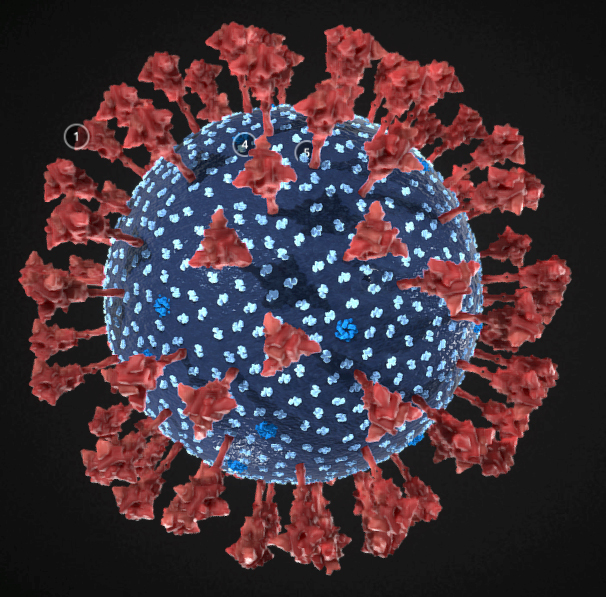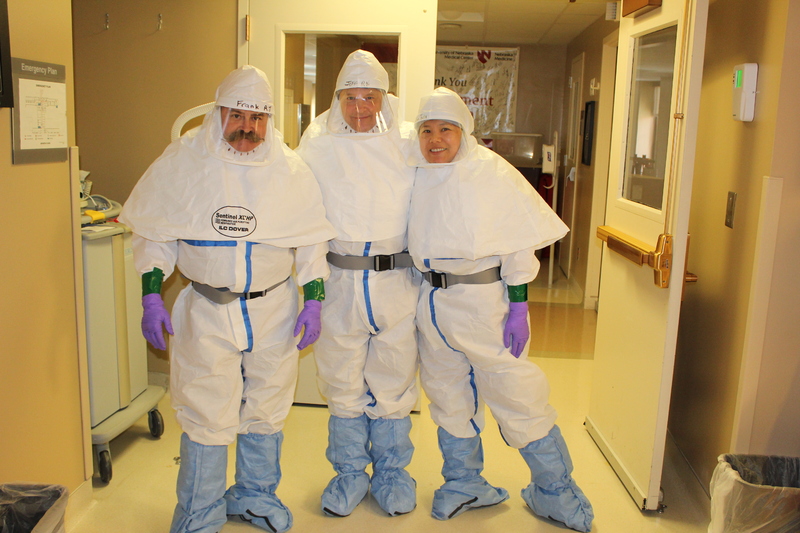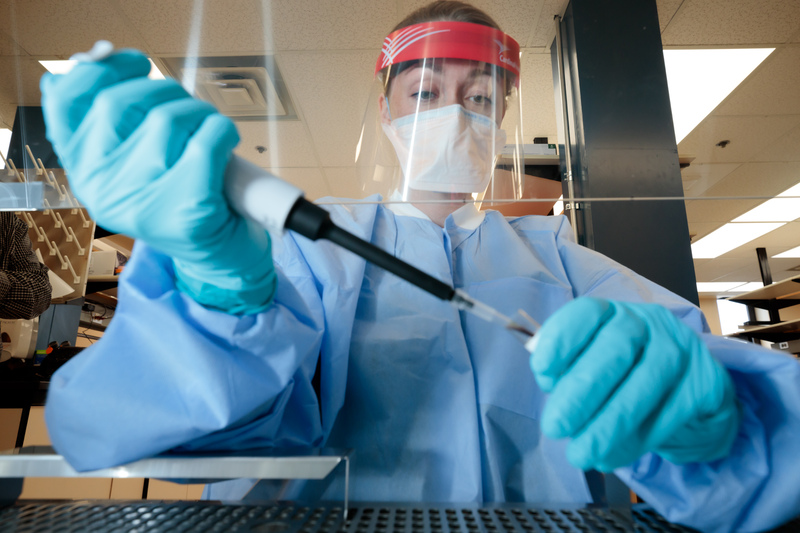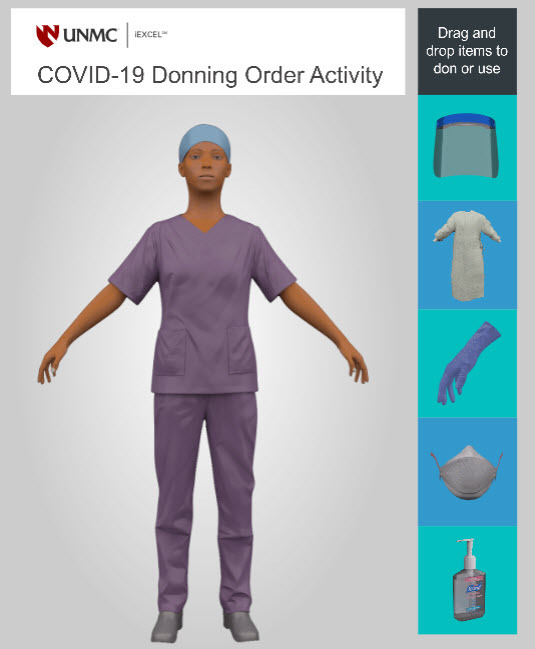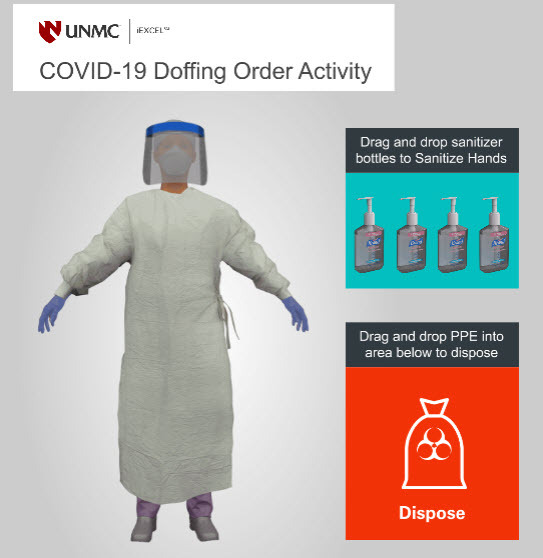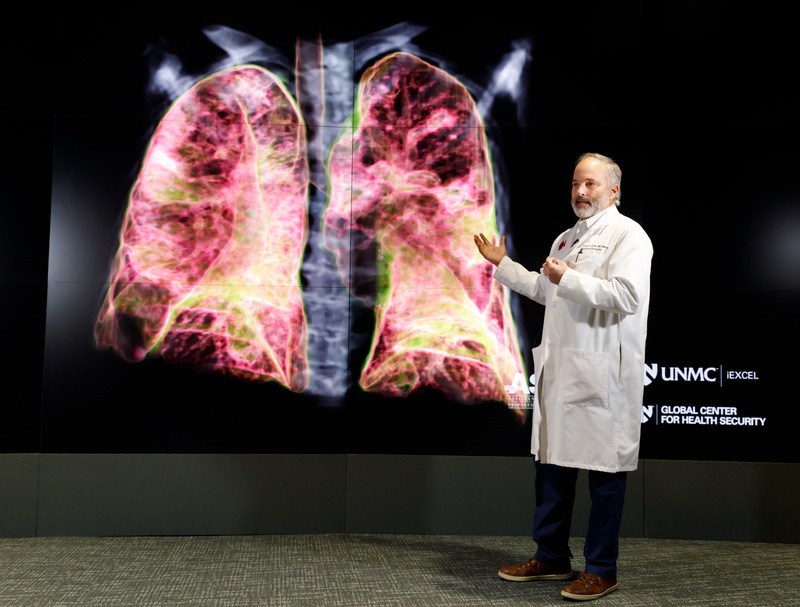Since the World Health Organization declared COVID-19 a global health emergency on January 30, 2020, UNMC/Nebraska Medicine has played an active role in confronting the virus locally and globally.
As a national leader in the study of infectious diseases and a local leader in Nebraska health care, UNMC/Nebraska Medicine has been at the forefront of the response to COVID-19, providing patient care, testing, and research. The university and medical center have served as an information resource for federal, state, and local officials, news outlets, businesses, schools, and communities.
To support these endeavors, the UNMC College of Medicine developed COVID-19 Rapid Response grants in April 2020, providing resources for faculty to study various aspects of the virus including diagnostics, prevention, treatments, and clinical research. UNMC/Nebraska Medicine has also been active in vaccine trials and distribution. As Nebraskans, Americans, and the world continue to process through the pandemic, UNMC/Nebraska Medicine is a multidimensional resource for all.
Learn more about UNMC/Nebraska Medicine’s impact during the pandemic through this timeline of a few select events.
UNMC COVID-19 Response Timeline

